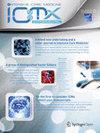Extracorporeal cardiopulmonary resuscitation: a comparison of two experimental approaches and systematic review of experimental models
IF 2.8
Q2 CRITICAL CARE MEDICINE
引用次数: 0
Abstract
In patients requiring extracorporeal cardiopulmonary resuscitation (ECPR), there is a need for studies to assess the potential benefits of therapeutic interventions to improve survival and reduce hypoxic-ischemic brain injuries. However, conducting human studies may be challenging. This study aimed to describe two experimental models developed in our laboratory and to conduct a systematic review of existing animal models of ECPR reported in the literature. In our experiments, pigs were subjected to 12 min (model 1) or 5 min (model 2) of untreated ventricular fibrillation, followed by 18 min (model 1) or 25 min (model 2) of conventional cardiopulmonary resuscitation. Results showed severe distributive shock, decreased brain oxygen pressure and increased intracranial pressure, with model 1 displaying more pronounced brain perfusion impairment. A systematic review of 52 studies, mostly conducted on pigs, revealed heterogeneity in cardiac arrest induction methods, cardiopulmonary resuscitation strategies, and evaluated outcomes. This review emphasizes the significant impact of no-flow and low-flow durations on brain injury severity following ECPR. However, the diversity in experimental models hinders direct comparisons, urging the standardization of ECPR models to enhance consistency and comparability across studies.体外心肺复苏:两种实验方法的比较和实验模型的系统回顾
对于需要进行体外心肺复苏(ECPR)的患者,需要进行研究以评估治疗干预对提高存活率和减少缺氧缺血性脑损伤的潜在益处。然而,开展人体研究可能具有挑战性。本研究旨在描述我们实验室开发的两种实验模型,并对文献中报道的现有 ECPR 动物模型进行系统回顾。在我们的实验中,猪在未经处理的心室颤动情况下接受 12 分钟(模型 1)或 5 分钟(模型 2)的心肺复苏,然后接受 18 分钟(模型 1)或 25 分钟(模型 2)的常规心肺复苏。结果显示出严重的分布性休克、脑氧压下降和颅内压升高,其中模型 1 显示出更明显的脑灌注损伤。对 52 项研究进行的系统性回顾显示,心搏骤停诱导方法、心肺复苏策略和评估结果存在异质性,这些研究大多在猪身上进行。该综述强调了无血流和低血流持续时间对 ECPR 后脑损伤严重程度的重要影响。然而,实验模型的多样性阻碍了直接比较,因此需要对 ECPR 模型进行标准化,以提高各项研究的一致性和可比性。
本文章由计算机程序翻译,如有差异,请以英文原文为准。
求助全文
约1分钟内获得全文
求助全文
来源期刊

Intensive Care Medicine Experimental
CRITICAL CARE MEDICINE-
CiteScore
5.10
自引率
2.90%
发文量
48
审稿时长
13 weeks
 求助内容:
求助内容: 应助结果提醒方式:
应助结果提醒方式:


